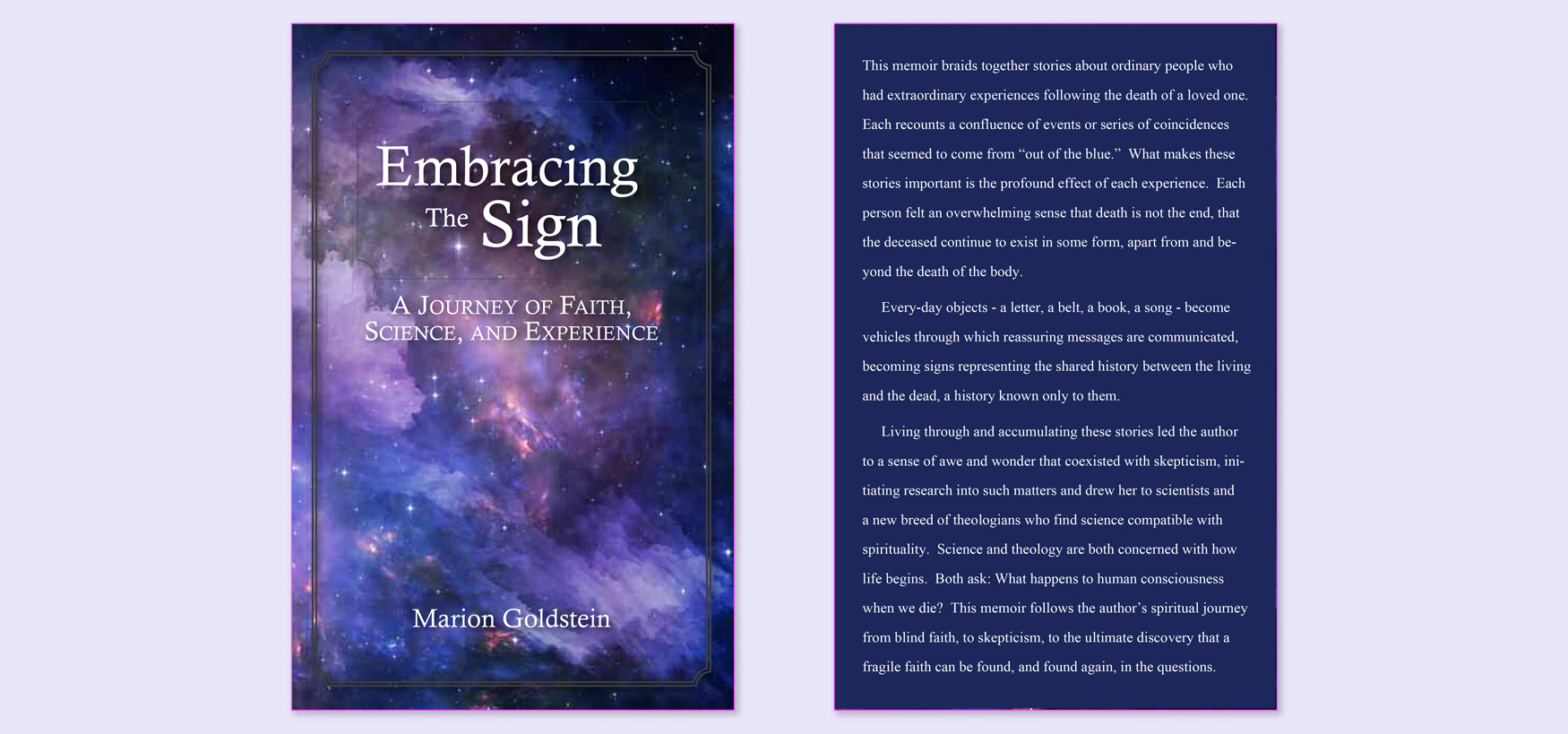Introduction
This memoir includes a collection of personal stories about ordinary people who had extraordinary experiences following the death of a loved one. Each recounts a confluence of events or a series of coincidences that could not have been planned for or anticipated, but seem to come from “out of the blue.” What makes these stories important is the profound effect the experience had on those involved. Each person found reassurance in the occurrence and an overwhelming sense that death was not the end, that the deceased continued to exist in some form, apart from and beyond the death of the body.
The power of each story is conveyed through the idiosyncratic, personal and inexplicable way everyday objects – a letter, a belt, a balloon, a meat thermometer, a song, a book, a light fixture, the sash to a dress – become a vehicle through which a reassuring message is communicated. In each case, the object is interpreted as a sign, since it represents a shared history between the living and the dead, a history known only to them. Sometimes humorous, sometimes serious, these signs are experienced as something spiritual. They point to an unimaginable “more” capable of breaking through the boundaries separating life and death, and making itself known to the living.
A common thread running through these stories is the sense of presence conveyed by the experience, a sense that the deceased is present in that moment and a sense that a spiritual world exists. This is commingled with feelings of peace and comfort, however short lived, that mediate grief and the pain of separation so prevalent immediately after a death. A second thread embedded in each story is the power of love, suggesting that love is a force that binds us in a universe that scientists increasingly find more complex and eternal than they ever imagined.
As I both lived through such experiences and accumulated stories from others, awe and wonder wrestled with the skeptic in me. I continued to ask: What is happening here? For some, these events were merely random acts of coincidence that would eventually be explained through science and natural law. For others, they were evidence of magical thinking or projections of the mind created to fulfill a psychological need. For those who had had such experiences, they were seen as wordless and powerful communications from a spiritual world that reflected an afterlife.
Friends and acquaintances often asked what I was writing about. After I told them it was about signs after death, the response was often, “Do I have a story for you. I never told anyone before, but maybe it’ll help you with your book.” Many of the experiences people related had happened years before, but they remained integrated as peak moments that still informed the storytellers’ relationship with death.
As I discovered how common these coincidental experiences were, I began to research possible explanations. Beginning with the paranormal, one field of inquiry led to another and took me into cosmology, psychology, quantum physics, and theology. Since all experiences, perceptions, beliefs, feelings, and actions are filtered through our consciousness, I was drawn first to psychology, psychiatry, and neuroscience. And because many of these experiences were integrated in a spiritual context, I also was drawn to theology.
Scientists and theologians ask many of the same questions about ultimate meanings, beginnings and endings, creation and death. Both disciplines are concerned with how life begins, how a single cell becomes a thinking human being, and what happens to human consciousness when we die.
Science demands rigorous proof. Theology and the realm of the supernatural make no such demands. Yet story lines seemed not only to converge but also to embrace one another. Nowhere is this more evident than in the scientific and theological questions posed by death and the afterlife.
These questions led me to scientists and theologians delving into such questions within their own disciplines. I found the work fascinating, inspiring, affirming. I have attempted to commingle my personal interest and experience with stories of signs and the writings of a new breed of theologians finding science compatible with spirituality. They have integrated modern science into their theology, and, in so doing, embark on a new avenue to spirituality.
Since I am neither a scientist nor a theologian, I have relied on the words of respected scientists and theologians. I limited myself to those whose words spoke to me in my efforts to advance my own faith in an afterlife, which, for me, was the main criteria of a belief in God. I have integrated their words with my own and included a bibliography to reference direct quotes that are a product of their expertise.
At the same time, I acknowledge that I have not included the mainstream scientific belief successful in removing God from the picture. For me God still exists.
This is a book for those whose spiritual interests allow them to consider science as a valid form of inquiry into the existence of God. It is for those who find themselves rejecting or doubting God because science has “disproved” or “undermined” much of the dogma and doctrine that, up until the latter half of the twentieth century, formed the underpinnings of their belief in God. It is for those who question and wonder about life after death.
In the end, this book weaves together my own spiritual journey from blind faith to skeptic to the ultimate discovery that a fragile faith can be found, and again, in the questions.



